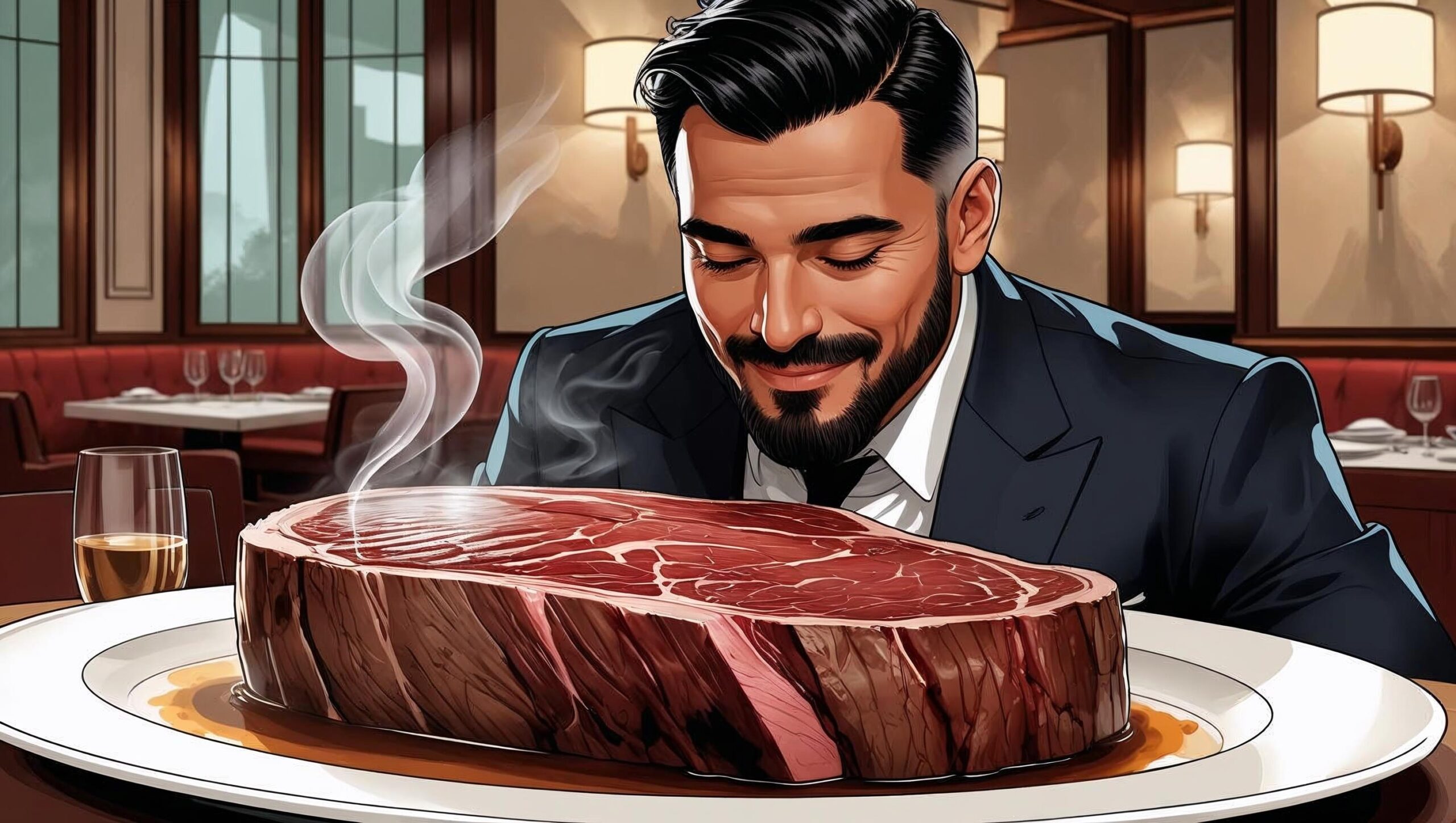Oooooohhhhhh. Ribeye.
Even more oooooohhhhhh. Aged ribeye.
There’s nothing quite like a melt-in-your-mouth steak marbled with just the right amount of rendered yummy fat. Not too much, not too little, and we’re off to the culinary delight festival.
The more bougie steak houses offer an option they call aged beef. Restaurant marketing folks always refer to it as “aged,” but it’s really just old when you think about it—days, weeks, even months. The even more upscale steak houses offer two types of aged beef: wet-aged or dry-aged.
So, what is aged beef? What is the difference between dry-aged and wet-aged? And why does old meat not just make you sick when you eat it? Let’s find out…
What Does Aging Do?
Let’s stick with the marketing definition of aged beef. And then we’ll gradually drift into the mechanics of it and what exactly it does.
Aging beef involves letting it “rest” after slaughter in a controlled environment. The objective is to allow it to become more tender and enhance the flavor. It’s a little bit like letting a fine wine or cheese rest for months, years, or even decades, so it gets better and better over time. In the case of beef, the aging process allows enzymes to break down the muscle tissue, making it more tender and tasty. While I’ll never complain about being served a “fresh” steak, it can be a bit more bland and tough, at least by comparison.
The aging process completes its magic in a number of ways.
First, with time, natural enzymes will break down tougher steak parts like muscle fibers and connective tissues, eventually, if done right, turning that chewy hunk of beef into a melt-in-your-mouth delight.
Then there’s the concentration effect, in part through dehydration. Over time, especially with the Dry Aging process, water content evaporates. With less water involved, the core beef flavors are more prominent and bold. It’s kind of like making a glass of Tang with six heaping tablespoons of that synthetic powder, although the old meat is far tastier and most likely better for your health.
Then, there’s fat oxidation. As fats break down, they produce delicious and awesome-smelling compounds, including esters, aldehydes, ketones, and others. We talked about this in a story on why bacon smells so delicious in my book, The Practical Guide to Becoming the Least Boring Person in the Room. A similar effect happens here.
OK, hold on to your stomach, this last one gets a bit weird, unless you like things like Blue Cheese. “Good” bacteria and molds start to grow, at least with Dry Aging. These add depth of flavor, even though much of it is usually cut off before preparation.
There are two types of aging: wet and dry.
Wet Aging
The wet aging process sounds a bit more “approachable” as it involves vacuum sealing the meat and allowing it to stew in its own juices.
It’s also a faster and easier process, taking from 7 to 28 days in most cases. As a result, the less expensive aged beef is usually done this way, for example, what you might find at your local grocery store and restaurants, where the entrees are still in two-digit territory.
During the entire wet aging process, the beef is stored at carefully controlled refrigerator temperatures, usually in the mid-30s Fahrenheit, to prevent bacterial growth and spoilage.
Dry Aging
Dry aging is also performed at refrigerator temperatures, but perhaps at a couple of degrees warmer to allow desired enzyme activity. We’re still talking below 40 degrees to prevent overgrowth of dangerous bacteria.
The difference is that instead of vacuum sealing smaller cuts, large hunks of beef are hung “bare” in the cooled environment, exposing the meat to air and humidity. And the process is longer, usually ranging from 21 to 60 days.
At the end, the beef will have a crusty surface that is trimmed off prior to finishing the butchering process and dividing the large cuts into individual steak portions.
So, more time. More work. Less meat from dehydration and trimming off the nasty stuff. Ipso facto e. pluribus unum, dry-aged steak costs more than wet-aged.
Why Don’t We Get Sick?
You might think, after reading all this, that aged beef is a recipe for calling into work sick after a night at the fancy steak house. Fortunately, it’s not.
It’s all about balance. Through careful control of conditions and temperatures, bacterial growth is kept to reasonable and safe levels while maintaining enough “warmth” to allow activity to thrive.
There are other controls that slow the growth of harmful microbes. In wet aging, the vacuum sealing helps a lot. In dry aging, the air is filtered and controlled, and sanitary conditions are strictly maintained. And, of course, the trimming helps remove the doubtful parts. We do that with cheeses all the time, so no big deal.
Hungry? Now, go treat yourself to an old hunk of meat.








